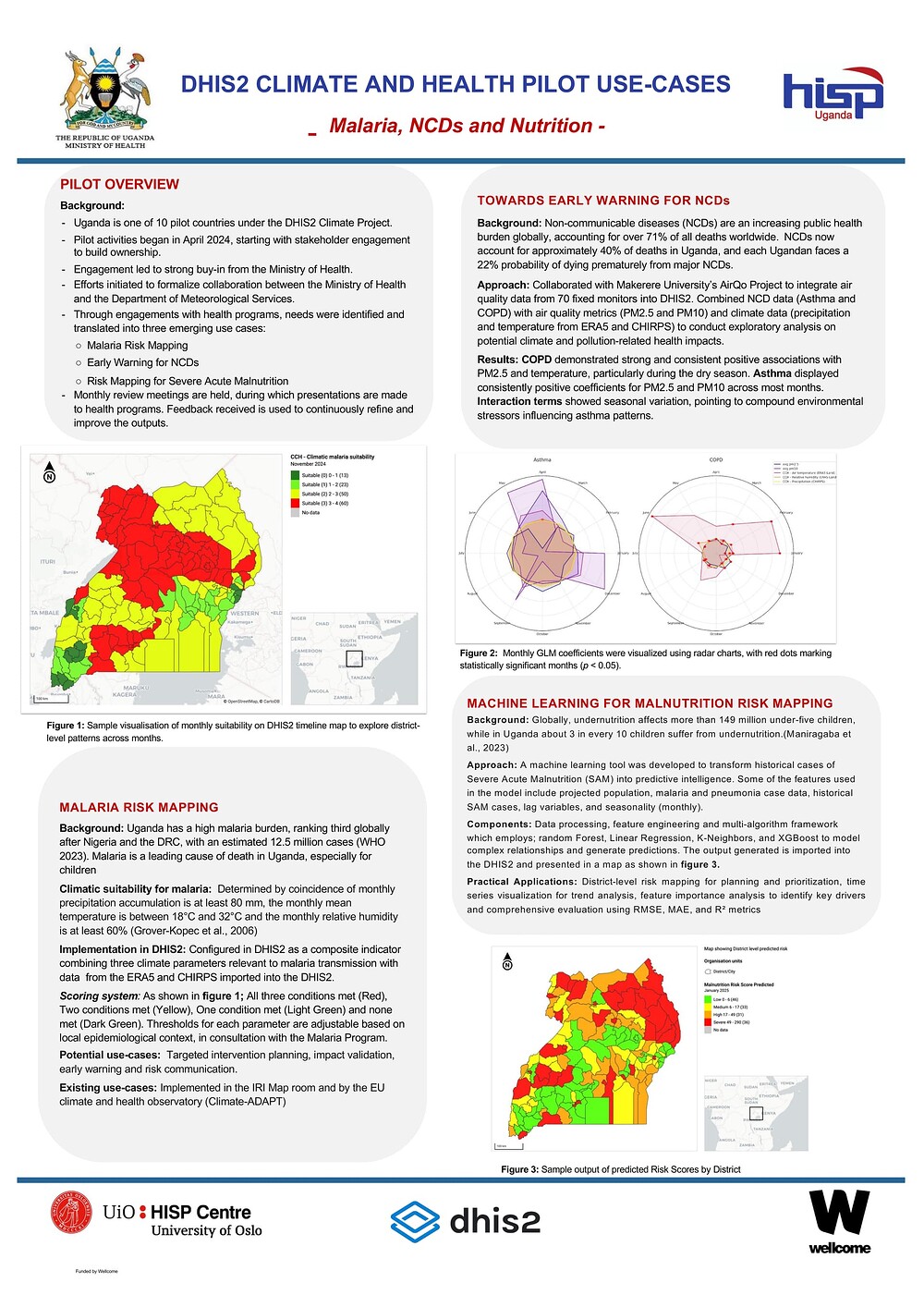AI Generated Summary
This document outlines the DHIS2 Climate and Health Pilot Use-Cases in Uganda, focusing on malaria, non-communicable diseases (NCDs), and nutrition.
Key points include:
- Pilot Overview: Uganda is one of 10 pilot countries, with activities starting in April 2024. Strong collaboration has been established with the Ministry of Health and efforts are underway to formalize collaboration with the Department of Meteorological Services. Three main use cases identified are Malaria Risk Mapping, Early Warning for NCDs, and Risk Mapping for Severe Acute Malnutrition.
- Towards Early Warning for NCDs: NCDs account for 40% of deaths in Uganda. The pilot integrated air quality data from Makerere University’s AirQo Project with NCD data (Asthma and COPD) and climate data. Results show strong associations between COPD and PM2.5/temperature (especially in dry season), and positive correlations for asthma with PM2.5 and PM10.
- Malaria Risk Mapping: Uganda has a high malaria burden. Climatic suitability for malaria is determined by precipitation, temperature, and relative humidity thresholds. This is configured in DHIS2 as a composite indicator with a scoring system (Figure 1). Potential uses include targeted intervention planning and early warning.
- Machine Learning for Malnutrition Risk Mapping: Undernutrition affects about 3 in 10 children in Uganda. A machine learning tool was developed to predict Severe Acute Malnutrition (SAM) using historical SAM cases, population projections, malaria and pneumonia data, and seasonality. The output is imported into DHIS2 and presented in a map (Figure 3), supporting district-level risk mapping and trend analysis.
